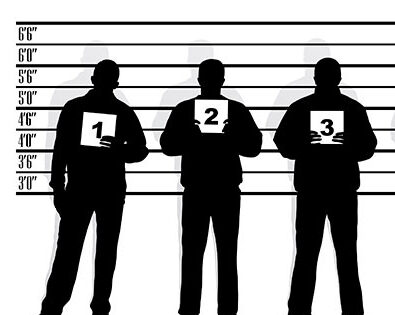Minnesota Adopts Landmark Eyewitness ID Law
New measure prevents wrongful convictions by requiring scientifically-based lineup procedures.
05.19.20 By Innocence Staff
St. Paul, MN – On Saturday, Governor Tim Walz signed legislation requiring law enforcement to adopt statewide best practices for lineup procedures. Sponsored by Sen. Bill Ingebrigtsen, R-Alexandria, and Rep. Dave Pinto, DFL-St. Paul, the new law protects against eyewitness misidentification, the leading cause of DNA-based exonerations in the United States.
“Adopting statewide, scientifically-based lineup practices will protect the innocent and provide law enforcement with more accurate evidence,” said John Kingrey, board co-chair of the Innocence Project of Minnesota. “Senator Ingebrigsten and Representative Pinto, as well as Senator Ron Latz, really championed this measure, and it was great to have support from the Minnesota County Attorneys Association and testimony from Professor Nancy Steblay, a nationally-recognized expert on the subject from Augsburg University.”
“At no time should an innocent person go to prison. This is just another tool that will help keep that from ever happening. As a former sheriff, I am proud to be part of this initiative,” said Senator Ingebrigtsen, R-Alexandria.
“We must ensure law enforcement agencies use sound, science-based practices to identify perpetrators,” said Rep. Pinto. “Establishing guidelines for eyewitness identification will maximize the reliability of these procedures and better protect the innocent.”
Nationally, eyewitness misidentification played a role in 71 percent of wrongful convictions that were later overturned with DNA in the United States. In Minnesota, David Sutherlin was wrongfully convicted of a 1985 rape in St. Paul. In 2002, DNA proved his innocence and revealed the actual culprit, who could no longer be prosecuted because the statute of limitations had passed.
“The worst situation is a botched eyewitness ID, the most powerful and least reliable form of evidence,” said Senator Latz, D-St. Louis Park. “This law will bring more consistency and confidence to criminal investigations and prosecutions, increasing the likelihood that the right defendant faces justice and the innocent person is never charged. As a result, we will all be safer.”
In 2014, the National Research Council convened a taskforce of the nation’s leading eyewitness identification experts – including Professor Nancy Steblay – that issued a set of best practices for preventing mistaken identifications. While some jurisdictions were already using the recommended procedures, a 2016 survey conducted by the Minnesota Police Chiefs Association & Sheriffs’ Associations revealed that half of their agencies had no written lineup policies at all.
The new law standardizes best practices throughout the state by requiring the Minnesota Board of Peace Officers and Standards Training (POST) to develop a model policy and all law enforcement agencies to adopt written procedures that include four key reforms:
- Using double blind or blinded administration meaning the official conducting the procedure is unaware of the suspect’s identity to prevent suggestiveness. If that is not practical the administrator can use a photo lineup procedure that prevents him or her from seeing which are being viewed by the eyewitness at a given time.
- Instructing the eyewitness that the perpetrator may or may not be present in the lineup.
- Selecting non-suspect fillers to place in the lineup who match the eyewitness’s description of the perpetrator.
- Documenting the eyewitness’s level of confidence immediately after an identification is made.
“The Legislature is to be commended in addressing this important criminal justice reform initiative, especially when you consider what they were able to accomplish due to the pandemic crisis,” said Sara Jones, Executive Director of the Innocence Project of Minnesota.
“I am very pleased to see the eyewitness identification reforms enacted by the Minnesota legislature,” said Nancy Steblay, Ph.D., Professor of Psychology at Augsburg University. “In over four decades of research, eyewitness scientists have come to better understand the fragile nature of memory and the ways in which eyewitness memory can be vulnerable to error. The enacted reforms specify science-based best practices for the collection of eyewitness memory evidence.”

Leave a Reply
Thank you for visiting us. You can learn more about how we consider cases here. Please avoid sharing any personal information in the comments below and join us in making this a hate-speech free and safe space for everyone.